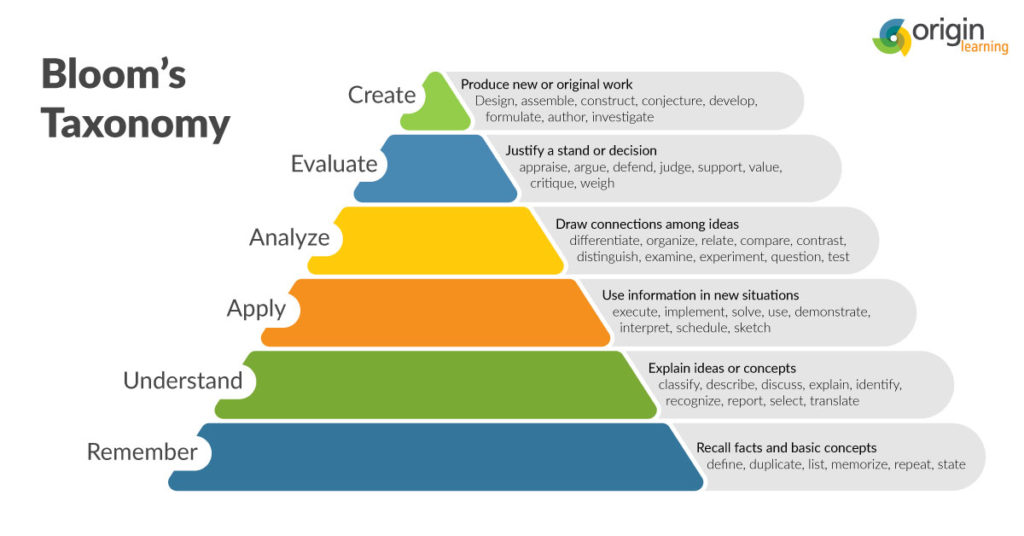L&D teams around the world are at an interesting juncture. The last couple of years have brought in a lot of changes to the way L&D teams function and the way employees are trained. Organizations have now realized the merits of “remote work” and the benefits of self-paced learning programs. The hassles involving in-person training sessions and workshops that required both the trainer and learners to be present physically at one location have given way to virtual training, video-based microlearning courses, and compliance training programs that can be accessed anywhere, anytime.
This blog post will introduce the term “active learning,” how learning objectives can be met with microlearning, the benefits of using microlearning for compliance training programs, and supporting it with a case study.

Table of Contents
Understanding the Importance of Learning Objectives
In the last few years, there has been a lot of debate about presenting the learning objectives and course highlights upfront to the learner. One camp argues stating self-discovery and allowing learners to discover what the whole program has to offer. Another camp argues that the very premise of any form of learning is to let learners know what they will learn on completing a program.
Traditionally any form of learning focuses on allowing learners to pick up a new skill or brush up their knowledge on an existing skill. Learning objectives serve multiple purposes. They clearly list out what the learner will gain on completing a program and serve as a quick glimpse or summary of what the program will contain. Where there is a choice for a learner to pick up a program; the learning objectives allow them the luxury to pick and choose the course. If the learning objectives do not interest them and if it is not a mandatory course the learner may skip the course. This is significant in the world of course aggregators and platforms like LinkedIn Learning, Coursera, Udemy, and Skillshare that offer a wide variety of courses on different topics. It helps learners find the perfect course that meets their needs. This article published on the Training Industry website offers insights on the benefits of aligning learning outcomes and corporate training.
What is Active Learning?
In recent years, the term “active learning” is becoming quite popular in the corporate learning sector. More commonly used in the higher education sector, active learning is defined as an approach to instruction that actively engages students with case studies, role play, and problem-solving. Typically, applied in business schools, the active learning model is a proven way to enhance learning and help students meet their academic goals in a planned manner.
The Benefits of Active Learning
Active learning offers the following benefits:
- It helps promote higher order thinking skills.
- It engages students instead of superficial learning
- Improves transfer of knowledge from instructor to student
- Boosts learner engagement and retention of knowledge
- Helps students communicate better as it involves role play
- Prepares students for the challenges of the professional environment.
Thus, it is evident that active learning can play an important role in corporate learning too. By creating workplace learning that brings in concepts of role play, case studies, real-world problem scenarios, and guiding learners to solve them; we can help foster workplace learning with a greater degree of learner engagement.
Meeting Learning Objectives with Microlearning
In earlier blog posts we have highlighted how microlearning can be used effectively to improve learner engagement and boost retention of learning. We have also listed out where microlearning can work as an efficient tool to foster learning and where it may not work as a feasible solution. In this section, we will examine how microlearning can be used to meet learning objectives.
Setting Meaningful Learning Objectives
Learning objectives and Bloom’s Taxonomy are closely linked with each other. The advancements in technology have made eLearning more attractive and user-friendly. But the crux of any learning program: the objectives; are still firmly based on Bloom’s Taxonomy and the associated verbs used to frame statements.

Based on cognitive learning levels, the learning objectives are framed based on educating the learner with:
- Knowledge = Recalling concepts learned earlier.
- Comprehension = Understanding and interpreting the concepts taught.
- Application = Using the concepts learned to solve problems.
- Analysis = Simplifying the concepts learned to help understand ideas better.
- Synthesis = Putting together parts of analyzed material to create new concepts and ideas.
- Evaluation = Using specific criteria to make judgments about material being taught.
If learning objectives are framed perfectly they help simplify the entire course creation process, and will help both the designers working on creating the course and the learners who will be studying the course. You can watch this video to learn how learning objectives can influence the type of tool used to design eLearning.
Where Does Microlearning Play a Part?
Microlearning plays an important part in meeting learning objectives by presenting content mapped to the objectives in the form of brief animated videos, snippets of a longer audio or video recording, or brief goal-based interactivities that help the learners understand the concepts taught in the course. Microlearning can become an effective tool for active learning.
Microlearning can be used in tandem with other learning models and strategies to help meet the learning objectives or the entire course itself can be designed in the form of microlearning modules that are mapped to specific learning objectives and outcomes.
The Importance of Compliance Training
Compliance training is an important aspect of modern workplace learning. Compliance training can cover a wide variety of aspects like:
- Health and fire safety
- Mental health and awareness
- Prevention of sexual harassment (POSH courses)
- Code of conduct and office etiquette, and many more.
Most of these areas are usually covered as a part of the employee onboarding program with dedicated sessions for each topic. Fire and safety, and POSH programs are conducted on an annual basis in most organizations.
Using Microlearning for Compliance Training
Microlearning can be used as an effective solution to deliver different forms of compliance training by creating brief videos on each topic and providing demonstration videos featuring actual people or animated characters. The videos can be designed to show what to do in case of a threat and how to react in such scenarios. An assessment can then be added which requires the employees to answer how they would react in the event of an actual environmental, health, or man-made threat. By simplifying long and complex rules and laws into animated videos, one can help employees learn faster and guide them to react appropriately when there is a real-life threat.
Case Study on Compliance Training using Microlearning
A leading multinational company that develops and sells networking products wanted to reimagine their employee training. The organization had a regular ”Code of Conduct” document in the form of a pdf that was shared with all employees. It was not proving to be effective and hence wanted to explore an engaging way to present the rules of the workplace to the employees.
As part of the solution framework, Origin Learning transformed the existing material into a story-based scenario for employees to experience. The content was grouped into four clusters and like television or web-show; episodes were created that would allow learners to participate in them as characters. They would then navigate these scenarios and learn in detail how the “Code of Conduct” functioned in the organization. There were also two-minute videos that explained and reinforced each concept. By creating teaser videos for each upcoming scenario, Origin was able to create a high level of anticipation and curiosity among the learners. The project was a huge success as it created an active learning experience and achieved objectives that were initially identified. You can learn more about this project here.
Would you like to reimagine training? Have you always wanted to make Compliance Training more interesting and engaging? Write to us at info@originlearning.com and meet your learning and training objectives with ease.
